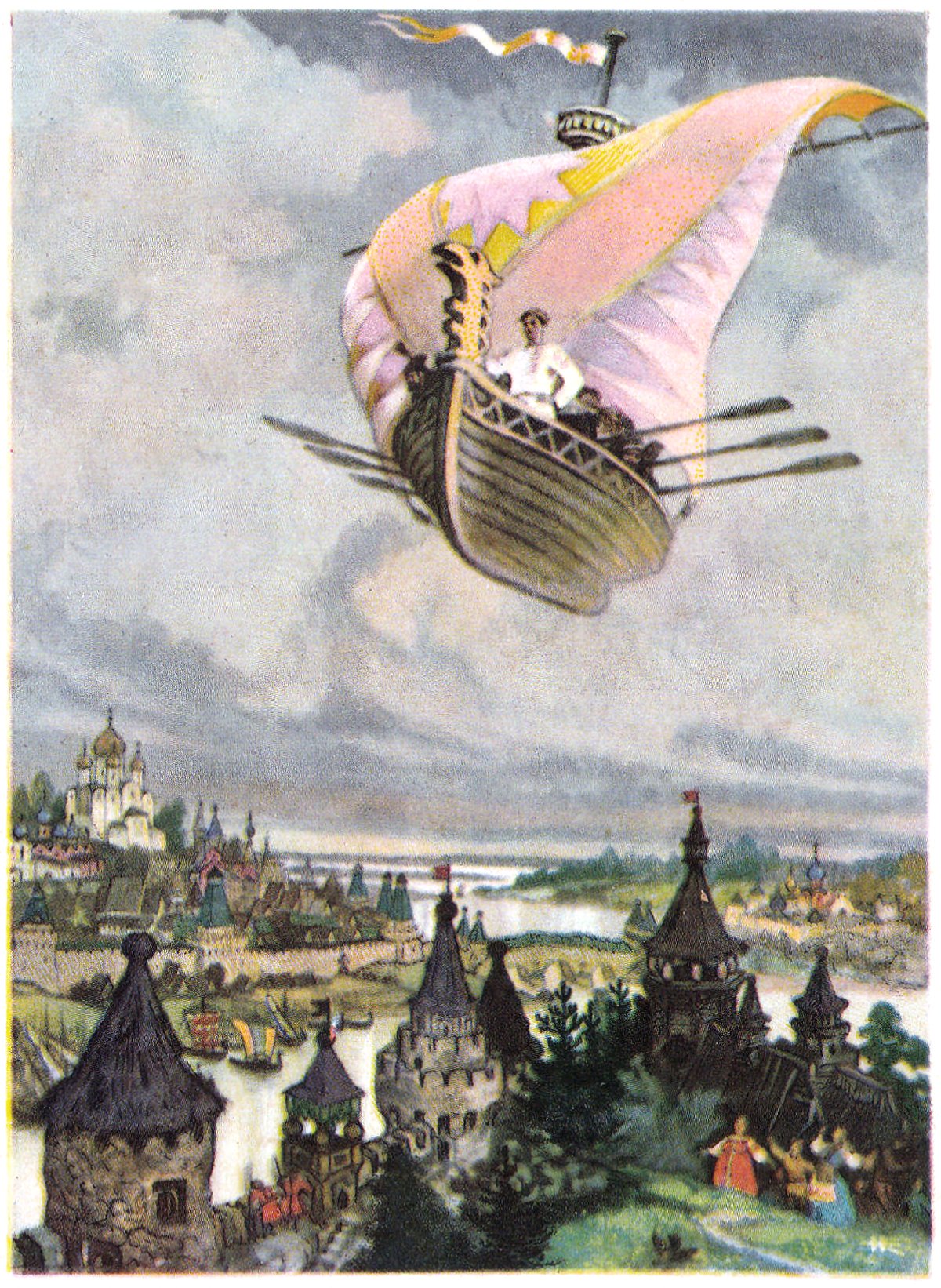The Fool of the World and the Flying Ship
Illustration of the flying ship from the Russian folktale The Fool of the World and the Flying Ship. Taken from a 1956 Russian postcard illustrated by Kochergin.
Flight is used in myriad folk tales to symbolize power. This is typically done to aid a character who is either downtrodden or has done a good deed without a promise of reward. The Russian folk tale The Fool of the World and the Flying Ship follows this pattern. It’s the story of a young fool who ends up marrying a princess because of a series of fortunate events, combined with his good-natured approach to others.
As the story goes, the main character is one of three sons and the fool of the group. One day the local czar declares that whoever can bring him a ship that flies will get to marry his daughter. The three sons set off to find such a ship. The youngest son eventually meets a man who asks for some of his food, which he gives him. In return for the food, the man teaches the youngest son to strike a tree with an axe and fall to his knees. Once he stands back up, he’ll see that the tree has turned into a flying ship. The man tells him that the ship will take him anywhere, but he must pick up anyone along the way who asks for a ride. The youngest son agrees and he sets off for the Czar’s palace.
Along the journey, the youngest son meets a series of men who ask for a ride. Each of these men has an overly-specific possession, skill or need. These range from a man with the ability to hear everything in the world, or a man who is super thirsty, or a man who hops on one leg because he has the ability to jump to the end of the earth in a single two-footed bound. The youngest son grants each of them a ride, and together they all make the journey to the Czar’s palace.
After meeting the czar and presenting him with the flying ship, the czar won’t agree to let the youngest son marry his daughter because he is a peasant. He gives the youngest son a series of seemingly impossible tasks to perform in order to prove his worth. Fortunately, each of these tasks perfectly aligns with one of the men he picked up along the way. For example, at one point the czar orders the youngest son to drink forty casks of wine, which the super thirsty man does for him. After all the outlandish requests are completed, the czar finally dresses the youngest son in a rich mans clothes, and introduces him to his daughter. She quickly falls in love with him, they marry, and they live happily ever after.
It’s an intriguing tale that reveals the power of verticality. The czar could’ve asked for anything, but he decided on a ship that flies. This is because the ability to fly grants vast powers to those who achieve it. This is illustrated three times throughout the story. First, flight grants a power so great that the czar offers his daughter to any man who could give it to him. Second, the youngest son was able to make the journey to the czar’s palace and bring a small army of men along with him. Third, it’s because of the power of flight that a fool ends up marrying a princess. As with any good folk tale, there’s other themes and lessons to be learned from the material, but the feature of the story remains the flying ship and the power it grants to those who possess it.
Check out other posts from literary sources that deal with verticality here.

